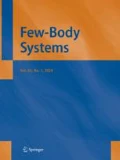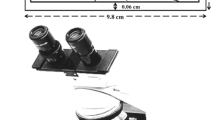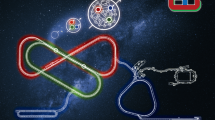Abstract
The measurement of nuclear generalized parton distributions (GPDs) in hard exclusive processes, such as deeply virtual Compton Scattering (DVCS), will be one of the main achievements of a new generation of experiments at high luminosity. Let us mention those under way at the Jefferson Laboratory (JLab) with the 12 GeV electron beam and, above all, those planned at the future Electron Ion Collider. The CLAS collaboration at JLab has recently demonstrated the possibility to disentangle the the coherent and incoherent channels of nuclear DVCS, a first step towards the measurement of GPDs of nuclei and of bound nucleons, respectively, opening new exciting perspectives in the field. In this scenario, accurate calculations, ultimately realistic, become mandatory. Light nuclei, for which realistic studies are affordable and conventional nuclear effects can be safely estimated, so that possible exotic effects can be exposed, play an important role. The status of the calculation of GPDs for light nuclei will be summarized, in particular for \(^3\)He and \(^4\)He, and some updates will be presented. The prospects for the next years, related to the new series of measurements at future facilities, will be addressed.







Similar content being viewed by others
References
I.C. Cloët et al., Exposing novel quark and gluon effects in nuclei. J. Phys. G 46(9), 093001 (2019) https://doi.org/10.1088/1361-6471/ab2731. arXiv:1902.10572 [nucl-ex]
J.J. Aubert et al., The ratio of the nucleon structure functions F2 n for iron and deuterium. Phys. Lett. B 123, 275 (1983). https://doi.org/10.1016/0370-2693(83)90437-9
R. Dupré, S. Scopetta, 3D structure and nuclear targets. Eur. Phys. J. A 52(6) , 159 (2016). https://doi.org/10.1140/epja/i2016-16159-1. arXiv:1510.00794 [nucl-ex]
A. Accardi et al., Electron ion collider: the next QCD frontier: understanding the glue that binds us all. Eur. Phys. J. A 52(9), 268 (2016). https://doi.org/10.1140/epja/i2016-16268-9. arXiv:1212.1701 [nucl-ex]
D. Müller et al., Wave functions, evolution equations and evolution kernels from light ray operators of QCD. Fortsch. Phys. 42, 101–141 (1994). https://doi.org/10.1002/prop.2190420202. arXiv:hep-ph/9812448
X.-D. Ji, Gauge-invariant decomposition of nucleon spin. Phys. Rev. Lett. 78, 610–613 (1997). https://doi.org/10.1103/PhysRevLett.78.610. arXiv:hep-ph/9603249
A.V. Radyushkin, Scaling limit of deeply virtual compton scattering. Phys. Lett. B 380, 417–425 (1996). https://doi.org/10.1016/0370-2693(96)00528-X. arXiv:hep-ph/9604317
K. Goeke, M.V. Polyakov, M. Vanderhaeghen, Hard exclusive reactions and the structure of hadrons. Prog. Part. Nucl. Phys. 47, 401–515. (2001). https://doi.org/10.1016/S0146-6410(01)00158-2. arXiv:hep-ph/0106012 [hep-ph]
M. Diehl, Generalized parton distributions in impact parameter space. Eur. Phys. J. C 25, 223–232 ([Erratum: Eur. Phys. J.C31,277(2003)]) (2002). https://doi.org/10.1007/s10052-002-1016-9. arXiv:hep-ph/0205208 [hep-ph]
A.V. Belitsky, A.V. Radyushkin, Unraveling hadron structure with generalized parton distributions. Phys. Rept. 418, 1–387. (2005). https://doi.org/10.1016/j.physrep.2005.06.002. arXiv:hep-ph/0504030
S. Boffi, B. Pasquini, Generalized parton distributions and the structure of the nucleon. Riv. Nuovo Cim. 30, 387 (2007). https://doi.org/10.1393/ncr/i2007-10025-7. arXiv:0711.2625 [hep-ph]
M. Burkardt, Impact parameter dependent parton distributions and off forward parton distributions for zeta-?. Phys. Rev. D 62, 071503 [Erratum: Phys. Rev.D66,119903(2002)] (2000). https://doi.org/10.1103/PhysRevD.66.119903. arXiv:hep-ph/0005108 [hep-ph]
R. Dupré et al., Analysis of deeply virtual compton scattering data at jefferson lab and proton tomography. Eur. Phys. J. A 53(8), 171 (2017). https://doi.org/10.1140/epja/i2017-12356-8. arXiv:1704.07330 [hep-ph]
M. Hattawy et al., First exclusive measurement of deeply virtual compton scattering off 4He: toward the 3D tomography of nuclei. Phys. Rev. Lett. 119(20), 202004 (2017). https://doi.org/10.1103/PhysRevLett.119.202004. arXiv:1707.03361 [nucl-ex]
M. Hattawy et al., Exploring the structure of the bound proton with deeply virtual compton scattering. Phys. Rev. Lett. 123(3), 032502 (2019). https://doi.org/10.1103/PhysRevLett.123.032502. arXiv:1812.07628 [nucl-ex]
E.R. Berger et al., Generalized parton distributions in the deuteron. Phys. Rev. Lett.87, 142302 (2001). https://doi.org/10.1103/PhysRevLett.87.142302. arXiv:hep-ph/0106192 [hep-ph]
M.V. Polyakov, Generalized parton distributions and strong forces inside nucleons and nuclei. Phys. Lett. B 555, 57–62 (2003). https://doi.org/10.1016/S0370-2693(03)00036-4. arXiv:hep-ph/0210165 [hep-ph]
J.-H. Jung et al., In-medium modified energy-momentum tensor form factors of the nucleon within the framework of a \(\pi -\rho -\omega \) soliton model. Phys. Rev. D 89(11), 114021 (2014). https://doi.org/10.1103/PhysRevD.89.114021. arXiv:1402.0161 [hep-ph]
M.V. Polyakov, P. Schweitzer, Forces inside hadrons: pressure, surface tension, mechanical radius, and all that. Int. J. Mod. Phys. A 33(26), 1830025. (2018). https://doi.org/10.1142/S0217751X18300259. arXiv: 1805.06596 [hep-ph]
C. Lorcé, H. Moutarde, A.P. Trawiński, Revisiting the mechanical properties of the nucleon. Eur. Phys. J. C 79(1), 89 (2019). https://doi.org/10.1140/epjc/s10052-019-6572-3. arXiv:1810.09837 [hep-ph]
A. Accardi et al., e+@JLab white paper: an experimental program with positron beams at jefferson lab (2020). arXiv:2007.15081 [nucl-ex]
W. Armstrong et al., Partonic structure of light nuclei (2017). arXiv:1708.00888 [nucl-ex]
M. Rinaldi, S. Scopetta, Extracting generalized neutron parton distributions from \(^3He\) data. Phys. Rev. C 87(3), 035208 (2013). https://doi.org/10.1103/PhysRevC.87.035208. arXiv:1208.2831 [nucl-th]
K. Goeke, V. Guzey, M. Siddikov, Leading twist nuclear shadowing, nuclear generalized parton distributions and nuclear DVCS at small x. Phys. Rev. C 79, 035210 (2009). https://doi.org/10.1103/PhysRevC.79.035210. arXiv:0901.4711 [hep-ph]
F. Cano, B. Pire, Deep electroproduction of photons and mesons on the deuteron. Eur. Phys. J. A 19, 423–438. (2004). https://doi.org/10.1140/epja/i2003-10127-x. arXiv:hep-ph/0307231 [hep-ph]
V. Guzey, M. Strikman, DVCS on spinless nuclear targets in impulse approximation. Phys. Rev. C 68, 015204 (2003). https://doi.org/10.1103/PhysRevC.68.015204. arXiv:hep-ph/0301216 [hep-ph]
A. Kirchner, D. Mueller, Deeply virtual compton scattering off nuclei. Eur. Phys. J. C32, 347–375 (2003). https://doi.org/10.1140/epjc/s2003-01415-x. arXiv:hep-ph/0302007
S. Scopetta, Generalized parton distributions of He-3. Phys. Rev. C70, 015205 (2004). https://doi.org/10.1103/PhysRevC.70.015205. arXiv:nucl-th/0404014 [nucl-th]
S. Liuti, S.K. Taneja, Microscopic description of deeply virtual Compton scattering off spin-0 nuclei. Phys. Rev. C72, 032201 (2005). https://doi.org/10.1103/PhysRevC.72.032201. arXiv:hep-ph/0505123 [hep-ph]
S. Fucini, S. Scopetta, M. Viviani, Coherent deeply virtual Compton scattering off \(^4\)He”. Phys. Rev. C 98(1), 015203 (2018). https://doi.org/10.1103/PhysRevC.98.015203. arXiv:1805.05877 [nucl-th]
K.S. Egiyan et al., Measurement of 2- and 3-nucleon short range correlation probabilities in nuclei. Phys. Rev. Lett. 96, 082501 (2006). https://doi.org/10.1103/PhysRevLett.96.082501. arXiv:nucl-ex/0508026 [nucl-ex]
R. Subedi et al., Probing cold dense nuclear matter. Science 320, 1476–1478 (2008). https://doi.org/10.1126/science.1156675. arXiv:0908.1514 [nucl-ex]
O. Hen et al., Measurement of transparency ratios for protons from short-range correlated pairs. Phys. Lett. B 722, 63–68 (2013). https://doi.org/10.1016/j.physletb.2013.04.011. arXiv:1212.5343 [nucl-ex]
S.J. Brodsky, F.E. Close, J.F. Gunion, Phenomenology of photon processes, vector dominance and crucial tests for parton models. Phys. Rev. D6, 177 (1972). https://doi.org/10.1103/PhysRevD.6.177
M.V. Polyakov, A.G. Shuvaev, On ’dual’ parametrizations of generalized parton distributions (2002). arXiv:hep-ph/0207153 [hep-ph]
V. Guzey, M. Siddikov, On the a-dependence of nuclear generalized parton distributions. J. Phys. G32, 251–268 (2006). https://doi.org/10.1088/0954-3899/32/3/002. arXiv:hep-ph/0509158 [hep-ph]
A. Airapetian et al., Nuclear-mass dependence of azimuthal beam-helicity and beam-charge asymmetries in deeply virtual compton scattering. Phys. Rev. C 81, 035202 (2010). https://doi.org/10.1103/PhysRevC.81.035202. arXiv:0911.0091 [hep-ex]
V. Guzey, Neutron contribution to nuclear DVCS asymmetries. Phys. Rev. C 78, 025211 (2008). https://doi.org/10.1103/PhysRevC.78.025211. arXiv:0801.3235 [nucl-th]
S. Niccolai et al., Deeply virtual compton scattering on the neutron with CLAS12 at 11 GeV. Proposal 12-11-003 at JLab PAC 37 (2011)
K. Hafidi et al., Nuclear Exclusive and semi-inclusive physics with a new CLAS12 low energy recoil detector. Letter of Intent 12-10- 009 to the JLab PAC 35 (2009)
S. Kuhn et al., The structure of the free neutron via spectator tagging. E12-06-113, JLAB approved experiment (2006)
S.K. Taneja et al., Angular momentum sum rule for spin one hadronic systems. Phys. Rev. D 86, 036008 (2012). https://doi.org/10.1103/PhysRevD.86.036008. arXiv:1101.0581 [hep-ph]
W. Cosyn, B. Pire, Transversity generalized parton distributions for the deuteron. Phys. Rev. D 98(7), 074020 (2018). https://doi.org/10.1103/PhysRevD.98.074020. arXiv:1806.01177 [hep-ph]
W. Cosyn, A. Freese, B. Pire, Polynomiality sum rules for generalized parton distributions of spin-1 targets. Phys. Rev. D 99(9), 094035 (2019). https://doi.org/10.1103/PhysRevD.99.094035. arXiv:1812.01511 [hep-ph]
W. Cosyn et al., The energy-momentum tensor of spin-1 hadrons: formalism. Eur. Phys. J. C 79(6), 476 (2019). https://doi.org/10.1140/epjc/s10052-019-6981-3. arXiv:1903.00408 [hep-ph]
S. Scopetta, Conventional nuclear effects on generalized parton distributions of trinucleons. Phys. Rev. C 79, 025207 (2009). https://doi.org/10.1103/PhysRevC.79.025207. arXiv:0901.3058 [nucl-th]
M. Rinaldi, S. Scopetta, Neutron orbital structure from generalized parton distributions of 3He. Phys. Rev. C 85, 062201 (2012). https://doi.org/10.1103/PhysRevC.85.062201. arXiv:1204.0723 [nucl-th]
M. Rinaldi, S. Scopetta, Theoretical description of deeply virtual Compton scattering off 3He. Few Body Syst. 55, 861–864 (2014). https://doi.org/10.1007/s00601-014-0803-9. arXiv:1401.1350 [nucl-th]
Al. Del Dotto et al., Light-front spin-dependent spectral function and nucleon momentum distributions for a three-body system. Phys. Rev. C 95(1), 014001 (2017). https://doi.org/10.1103/PhysRevC.95.014001. arXiv:1609.03804 [nucl-th]
R.B. Wiringa, V.G.J. Stoks, R. Schiavilla, An accurate nucleon-nucleon potential with charge independence breaking. Phys. Rev. C 51, 38–51 (1995). https://doi.org/10.1103/PhysRevC.51.38. arXiv:nucl-th/9408016 [nucl-th]
S.V. Goloskokov, P. Kroll, The role of the quark and gluon GPDs in hard vector-meson electroproduction. Eur. Phys. J. C 53, 367–384 (2008). https://doi.org/10.1140/epjc/s10052-007-0466-5. arXiv:0708.3569 [hep-ph]
S. Liuti, S.K. Taneja, Generalized parton distributions and color transparency phenomena. Phys. Rev. D 70, 074019 (2004). https://doi.org/10.1103/PhysRevD.70.074019. arXiv:hep-ph/0405014 [hep-ph]
B.S. Pudliner et al., Quantum Monte Carlo calculations of A \(<\)= 6 nuclei. Phys. Rev. Lett. 74, 4396–4399. (1995). https://doi.org/10.1103/PhysRevLett.74.4396. arXiv:nucl-th/9502031
S. Fucini, S. Scopetta, M. Viviani, Catching a glimpse of the parton structure of the bound proton. Phys. Rev. D 101(7), 071501 (2020). https://doi.org/10.1103/PhysRevD.101.071501. arXiv: 1909.12261 [nucl-th]
A. Fucini, S. Scopetta, M. Viviani, Incoherent deeply virtual Compton scattering off \(^4\)He(2020). arXiv:2008.11437 [nucl-th]
Wiki page for the Yellow Report Physics Working group (2020). https://wiki.bnl.gov/eicug/index.php/Yellow_Report_Physics_Exclusive_Reactions
S.V. Goloskokov, P. Kroll, The Target asymmetry in hard vectormeson electroproduction and parton angular momenta. Eur. Phys. J. C 59, 809–819 (2009). https://doi.org/10.1140/epjc/s10052-008-0833-x. arXiv:0809.4126 [hep-ph]
H. Morita, T. Suzuki, A realistic spectral function of He-4. Prog. Theor. Phys. 86, 671–684 (1991). https://doi.org/10.1143/PTP.86.671
V.D. Efros, W. Leidemann, G. Orlandini, Exact He-4 spectral function in a semirealistic N N potential model. Phys. Rev. C58, 582–585 (1998). https://doi.org/10.1103/PhysRevC.58.582. arXiv:nucl-th/9805002
M. Viviani, A. Kievsky, A. Rinat, GRS computation of deep inelastic electron scattering on He-4. Phys. Rev. C67, 034003 (2003). https://doi.org/10.1103/PhysRevC.67.034003. arXiv:nucl-th/0111049
A. Kievsky, S. Rosati, M. Viviani, The three nucleon bound state with realistic soft core and hard core potentials. Nucl. Phys. A 551, 241–254 (1993). https://doi.org/10.1016/0375-9474(93)90480-L
M. Viviani, A. Kievsky, S. Rosati, Calculation of the alpha-particle ground state within the hyperspherical harmonic basis. Phys. Rev. C71, 024006 (2005). https://doi.org/10.1103/PhysRevC.71.024006. arXiv:nucl-th/0408019
A. Kievsky et al., A high-precision variational approach to three- and four-nucleon bound and zero-energy scattering states. J. Phys. G35, 063101 (2008). https://doi.org/10.1088/0954-3899/35/6/063101. arXiv:0805.4688 [nucl-th]
B. Berthou et al., PARTONS: PARtonic tomography of nucleon software: a computing framework for the phenomenology of generalized parton distributions. Eur. Phys. J. C78(6), 478 (2018). https://doi.org/10.1140/epjc/s10052-018-5948-0. arXiv:1512.06174 [hep-ph]
E. Voutier, Helium compton form factor measurements at CLAS, in PoS DIS2013, p. 057 (2013). arXiv:1307.0222 [nucl-ex]
Acknowledgements
We gratefully acknowledge the collaboration with R. Dupré and M. Viviani, and many crucial discussions with E. Voutier and M. Hattawy on the Jefferson Lab esperiments. S.F. thanks P. Sznajder and C. Mezrag for some tuition on the use of the virtual access infrastructure 3DPARTONS, funded by the European Union’s Horizon 2020 research and innovation programme under grant agreement No 824093. This work was supported in part by the STRONG-2020 project of the European Union’s Horizon 2020 research and innovation programme under grant agreement No 824093, Working Package 23, “GPDS-ACT” and by the project “Deeply Virtual Compton Scattering off \(^4\)He”, in the programme FRB of the University of Perugia.
Author information
Authors and Affiliations
Corresponding author
Additional information
Publisher's Note
Springer Nature remains neutral with regard to jurisdictional claims in published maps and institutional affiliations.
Rights and permissions
About this article
Cite this article
Fucini, S., Rinaldi, M. & Scopetta, S. Generalized Parton Distributions of Light Nuclei. Few-Body Syst 62, 3 (2021). https://doi.org/10.1007/s00601-020-01590-0
Received:
Accepted:
Published:
DOI: https://doi.org/10.1007/s00601-020-01590-0




